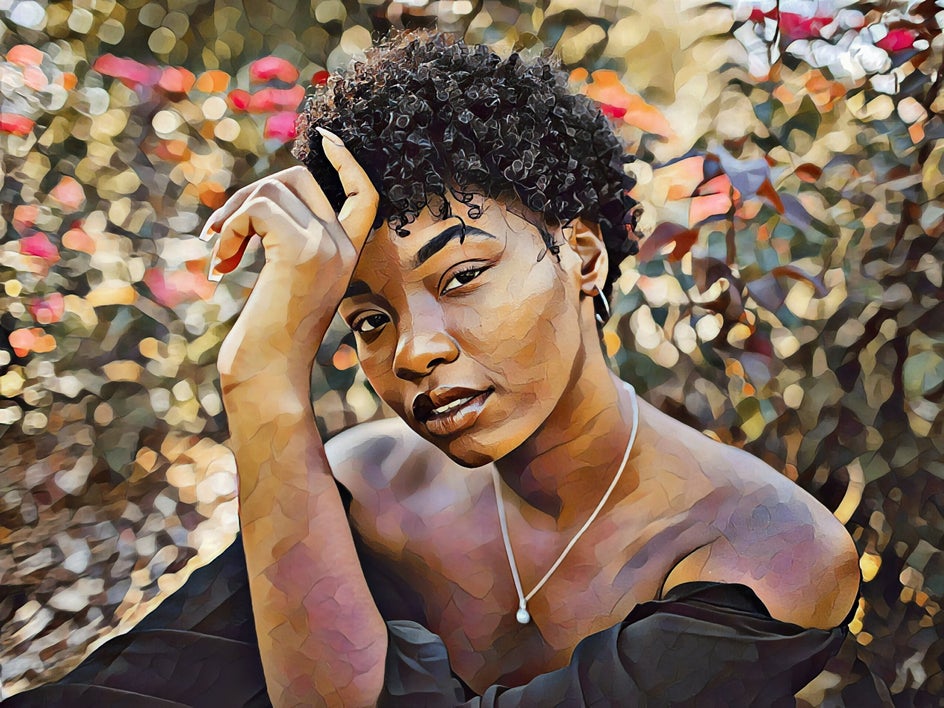Discovering Everything About Oil Paintings: A Guide to Recognizing Their Elegance and Worth
Oil paintings have captivated target markets for centuries, supplying a glimpse right into the creative mastery of various periods. Their abundant history is intertwined with cutting-edge strategies and profound emotional expression. Understanding the materials and approaches behind these artworks can boost recognition. Furthermore, the marketplace for oil paintings presents opportunities for financiers and collectors alike. As one discovers this interesting world, the inquiry develops: what makes an oil painting absolutely important?
The Background of Oil Painting: A Trip With Time
Although oil paint has roots that go back to ancient times, it absolutely grew during the Renaissance, when musicians discovered its adaptability and rich shade potential. Early examples can be mapped to the 7th century, with techniques evolving significantly throughout cultures. The tool came to be popular in Northern Europe in the 15th century, particularly with the works of musicians like Jan van Eyck, who originated its use for thorough realism and lively hues. This period noted a departure from tempera paints, enabling greater deepness and appearance. As oil painting spread, it influenced many musicians, resulting in work of arts by renowned numbers such as Leonardo da Vinci and Rembrandt. The medium's tradition proceeds, forming the art globe well into modern times.
Comprehending Oil Repaints: Products and Techniques
As artists check out the world of oil paints, they encounter a diverse array of materials and methods that specify this tool. The key components of oil paint consist of pigments, which supply shade, and drying oils, such as linseed, that bind the pigments and promote application. Various additives can modify the paint's structure and drying time, improving convenience. Strategies like glazing, where clear layers are developed, and impasto, which includes applying thick paint, permit various aesthetic impacts. In addition, the usage of brushes, scheme blades, and also fingers can produce unique textures and finishes. Comprehending these methods and products allows artists to fully express their creativity and attain the wanted influence in their artwork.
The Role of Color in Oil Paints
Color plays an essential role in oil paints, influencing both visual charm and emotional vibration. Understanding shade theory basics, consisting of the relationships in between shades, can boost an artist's ability to communicate state of mind and environment. Additionally, grasping color mixing techniques enables for greater depth and splendor in a painting's combination.

Shade Theory Fundamentals
Recognizing color theory is necessary for artists collaborating with oil paints, as it develops the foundation for creating visually interesting and unified structures. Shade concept includes the study of just how shades communicate, the color wheel, and the partnerships in between primary, secondary, and tertiary shades. Artists make use of corresponding colors to improve contrasts and create prime focus, while analogous shades advertise unity and cohesiveness within a piece. In addition, the concepts of cozy and cool shades influence the perception of depth and space in a paint. Realizing these concepts enables musicians to control shade efficiently, assisting the customer's eye and interacting their desired message. Mastery of shade theory eventually enhances a musician's ability to share emotions and concepts with their job.
Emotional Effect of Shade
The psychological impact of color in oil paints plays an important duty in exactly how customers regard and connect with art work. Shades stimulate details sensations and state of minds, influencing the customer's emotion. Cozy colors like oranges and reds can create a sense of heat and energy, while cool tones such as blues and eco-friendlies commonly stimulate peace or self-contemplation. Artists strategically choose color combinations to boost narrative components, guiding the target market's psychological journey. The saturation and contrast of shades further enhance these impacts, attracting focus and developing focus. Inevitably, the interplay of colors in oil paintings not only improves their visual allure yet additionally functions as a powerful tool for psychological expression, improving the viewer's experience and interpretation.
Shade Combining Techniques
While several aspects of oil paint add to the total make-up, grasping color blending methods is necessary for accomplishing desired effects and deepness. Color blending can be come close to with various techniques, including the additive and subtractive processes. Additive blending involves integrating colors of light, while subtractive blending counts on pigments, where colors mix to produce brand-new shades. Musicians commonly make use of a minimal palette to produce harmonious works, comprehending the connections in between main, additional, and tertiary colors. Strategies such as glazing and scumbling better enhance depth and luminosity. By skillfully blending colors, a musician can evoke emotions, develop prime focus, and achieve a sense of realism, inevitably raising the paint's emotional and visual impact.
Famous Oil Painters and Their Iconic Works

Well known for their proficiency of shade and strategy, oil painters have actually developed several of one of the most popular artworks in history. Renowned artists like Vincent van Gogh captivated audiences with his emotive brushwork in "Starry Evening," while Claude Monet's "Impression, Dawn" prepared for Impressionism. Leonardo da Vinci's "Mona Lisa" continues to be an enduring sign of creative genius, showcasing his skill in capturing human expression. At the same time, Rembrandt's "The Night Watch" illustrates his innovative use light and darkness. Various other significant figures include Pablo Picasso, who reinvented contemporary art with his vibrant trial and error in works like "Les Demoiselles d'Avignon," and Georgia O'Keeffe, whose dynamic representations of landscapes and flowers helped specify American innovation. Each artist's distinct style added substantially to the oil paint landscape.
Exactly how to Review the Top Quality of an Oil Paint
Reviewing the top quality of an oil paint includes a cautious evaluation of craftsmanship techniques, as well as an analysis of shade and make-up. Observing brushwork, layering, and the application of paint can disclose the musician's ability level. Additionally, the interplay of shades and the total plan of aspects contribute considerably to the paint's aesthetic value.
Assessing Craftsmanship Strategies
A careful evaluation of craftsmanship strategies is essential for establishing the top quality of an oil painting. Evaluators need to first analyze the application of paint; thick, textured brushstrokes might suggest an experienced hand, while extremely uniform applications might show a lack of deepness. oil paintings for sale. The layering technique is likewise essential; the existence of glazes and differed thickness can improve luminosity and complexity. Furthermore, the quality of the materials utilized, such as the canvas and pigments, plays a significant function in resilience and total aesthetic. Interest to detail in aspects like edges and changes between shades reflects the artist's commitment to their craft. Inevitably, these methods add to the paint's psychological impact and market value, functioning as indications of the musician's skill and intent
Assessing Shade and Make-up
While reviewing the high quality of an oil painting, one need to concentrate on the interaction of color and make-up, as these elements are essential to the art work's overall effect. Shade selections can develop and stimulate feelings state of mind; therefore, the artist's palette should be taken a look at for consistency and comparison. A healthy structure guides the customer's eye and develops a feeling of unity. Musicians commonly use strategies like the guideline of thirds or leading lines to improve visual interest. Additionally, using light and shadow can include deepness, improving the three-dimensionality of the painting. Eventually, an effective oil paint weds color and composition, engaging the customer and welcoming a much deeper admiration of the artist's vision and technique.
Caring for and Preserving Oil Paintings
Appropriate care and preservation of oil paintings is necessary for keeping their integrity and durability. To protect these artworks, it is vital to display them away from direct sunshine, which can create fading and discoloration. Keeping a secure setting with regulated temperature and humidity more aids in protecting against damages. Cleaning need to be done gently using a soft, dry fabric, avoiding any harsh chemicals that can harm the paint or varnish. Routine inspections for signs of degeneration, such as fracturing or flaking, are recommended. When storing or transporting oil paintings, proper extra padding and framing are necessary to avoid physical injury. Eventually, persistent treatment adds to the visual charm and value of oil paintings over time.
The Market for Oil Paints: Investing and collecting
Understanding the marketplace dynamics for oil paints is essential for enthusiasts and financiers alike. The value of these artworks is affected by different variables, consisting of the artist's credibility, historic importance, and present fads. Enthusiasts often look for items that reverberate personally while thinking about prospective appreciation in worth. Galleries and auctions offer as main locations for trading, with costs fluctuating based upon need and rarity. Spending in oil paints requires study right into the marketplace, in addition to an understanding of authenticity and provenance. In addition, arising musicians might supply opportunities for substantial returns, while established names can command high rates. In general, a tactical method to gathering can yield both visual satisfaction and financial rewards.

Often Asked Questions
What Are the Environmental Influences of Oil Paint Products?
The environmental effects of oil painting products consist of the launch of unpredictable natural substances (VOCs), hazardous waste generation, and source extraction for pigments. These variables add to air pollution and eco-friendly destruction, increasing concerns amongst ecologically aware artists and customers.
Just How Do Various Canvases Influence Oil Paint Results?
Different canvases affect oil paint results considerably. Surface area, texture, and absorbency top quality can alter paint application, drying times, and color vibrancy. Artists commonly select certain canvases to achieve desired effects and enhance their imaginative expression.
Can Oil Paintings Be Recovered if Damaged?
Oil click here paintings can indeed be recovered if harmed. Professional conservators use different methods to repair splits, tidy surface areas, and address staining, making sure that the art work keeps its initial elegance and worth for future generations.
What Are the Indications of an Initial Oil Paint?
The signs of an initial oil painting include noticeable brush strokes, texture variations, and an uneven canvas weave (oil paintings for sale). In addition, credibility may be verified via provenance, trademarks, and the existence of a varnish layer unique to oil tools
Just How Has Modern Technology Influenced Modern Oil Paint Techniques?
Innovation has actually greatly influenced modern oil painting techniques by introducing electronic devices for preparation, enhanced materials for texture and durability, and online platforms for offering and sharing art, consequently broadening musicians' innovative opportunities and target market reach. Oil painting has origins that date back to old times, it really grew during the Renaissance, when musicians discovered its versatility and abundant color potential. The emotional effect of color in oil paints plays a crucial role in how customers perceive and attach with art work. While several elements of oil painting contribute to the overall composition, understanding color mixing methods is necessary for achieving preferred effects and depth. Examining the high quality of an oil painting involves a cautious assessment of workmanship strategies, as well as an evaluation of color and structure. While reviewing the high quality of an oil painting, one need to concentrate on the interplay of color and composition, as these components are basic to the art work's total influence.